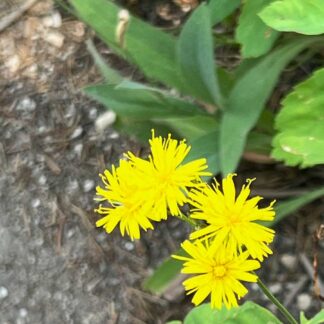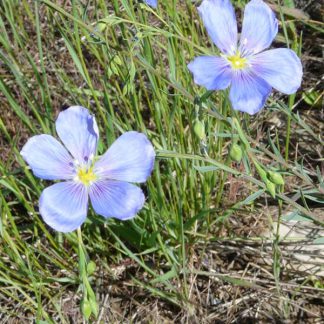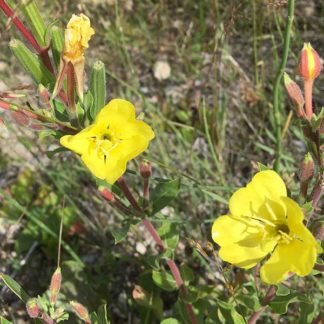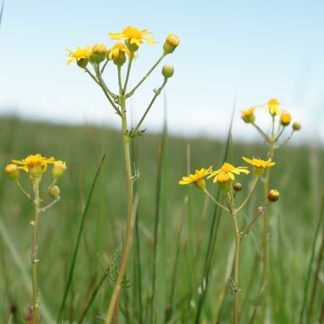one to several flowers
Showing 37–48 of 69 results
-

Hieracium aurantiaca / orange hawkweed
- orange dandelion-like flower
- petals square ended with small notches
- hairy leaves, stems and involucres
- found in many habitats, sometimes in excess
-

Hieracium scouleri / western hawkweed
- dandelion-like yellow flower heads
- square-ended petals; long stamens with split ends
- central yellow "button"
- hairy all over, especially on leaves and lower stem
- blooms all summer
-

Hyocyamus niger / black henbane
- highly toxic! including contact dermatitis
- 5-lobed, funnel-shaped flowers, brownish yellow with purple veins and center; 1.5" across
- flowers in summer, e.g. warm June, July
- elliptical leaves, pointy tips, toothed or lobed margins, prominent veins
- highly disturbed areas: wastelands, field edges etc.
-

Iris missouriensis / western blue flag iris
- wetland monocot - long leaves, parallel veins
- large blue flower with yellow "signal" stripe, purple veins
- 3 petals, 3 sepals make up the flower
- blooms in spring
- "like a domestic iris on a diet"
-

Lactuca serriola / prickly lettuce
- numerous dime-sized yellow flowers in an "airy" panicle
- buds droop or hang in a "shepherd's hook" before opening
- seed heads are dandelion-like, but more delicate
- highly divided, prickly leaves
- mostly in "waste" areas
-

Linum lewisii / wild blue flax
- intense blue, 5-petaled flowers
- red-ish or darker blue veins in petals
- buds, flowers and developing fruit present at same time
- narrow, sessile, 1 inch (ish) leaves
- especially on roadsides and in meadows in the Valley
-

Lithophragma parviflorum / smallflower woodland star
- small, white (or mauve) flowers with 5 highly disected petals
- up to 14 flowers per stalk, usually much less
- deeply lobed, glandularly pubescent leaves at stem bases
- spring bloomer in a wide variety of habitats
-

Lithospermum ruderale / Columbia puccoon
- small, pale yellow flowers in early spring
- flowers in dense clusters, nestled among the leaves
- 1–3 in. long, linear leaves, notably crowded on upper part of stems
- in dry areas, especially with sagebrush
-

Madia glomerata / mountain tarweed
- stems, leaves, flowers - strongly aromatic, like tar
- sticky glandular hairs cover foliage and floral bracts
- flowers in clusters with 1 to 3 yellow ray florets
- disk florets retain visible petals; black stamens
-

Oenothera villosa / hairy evening primrose
- yellow flowers on tall stalks, several flowers in a cluster
- 4 petals; 8 stamens; large, 4 part stigma
- hairy - often reddish - stems; hairy leaves
- lance-shaped leaves, larger on stem than basal
- disturbed areas and stream banks
-

Packera pseudaurea / falsegold groundsel
- yellow, flat-topped cluster of daisy-like flowers
- oval, erect basal leaves with long petioles and round/blunt-toothed edges
- generally in moist to wet habitats
-

Paxistima myrsinites / Oregon boxwood
- low shrub
- small, opposite leaves; lightly toothed, leathery, oval
- very early spring flowering
- teeny flowers with 4 red petals, 4 yellow stamens; in clusters
- usually on open, dry, sunny sites or open forests
Showing 37–48 of 69 results